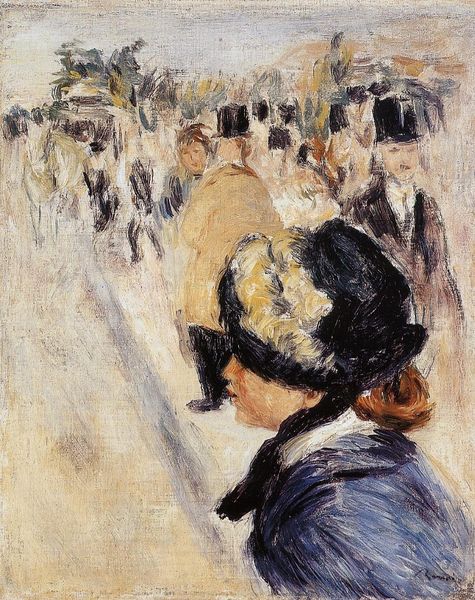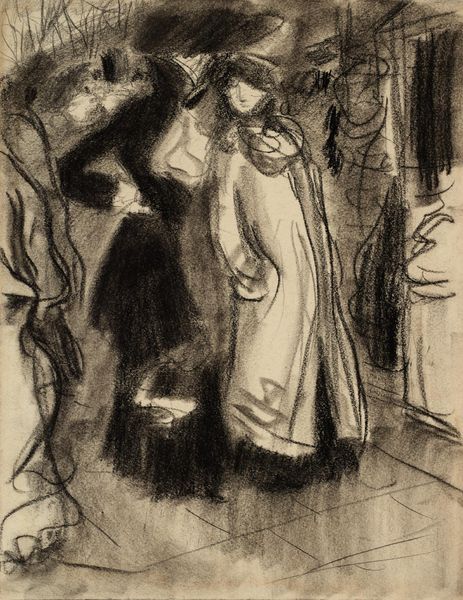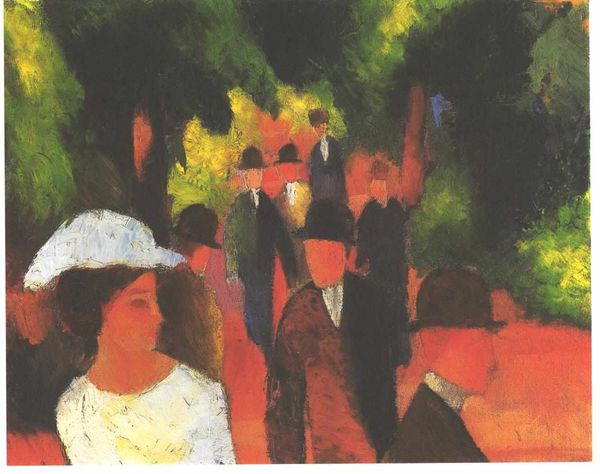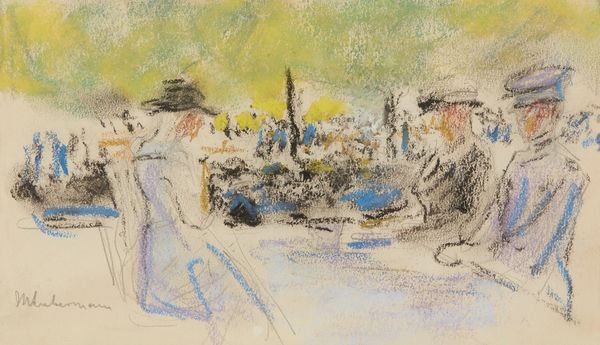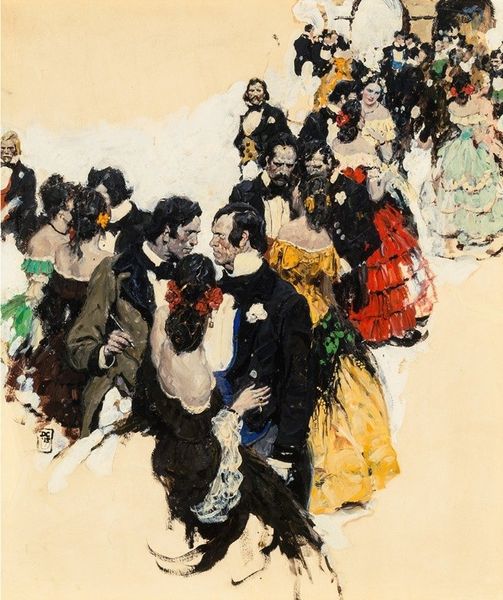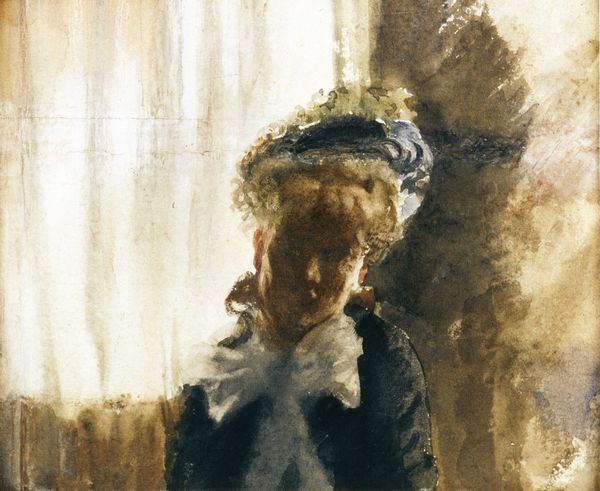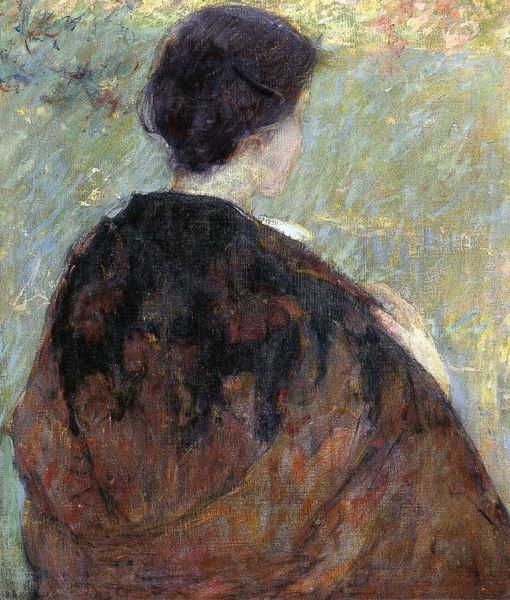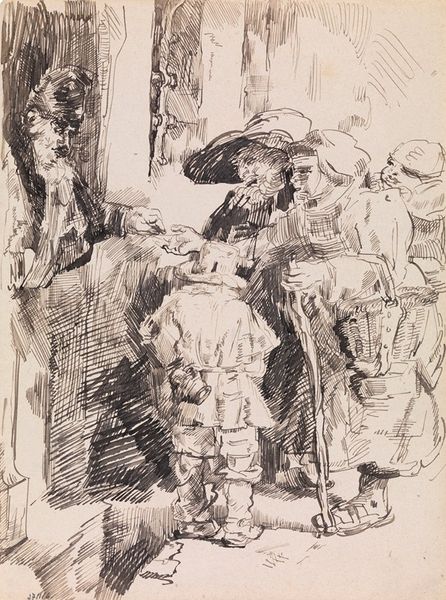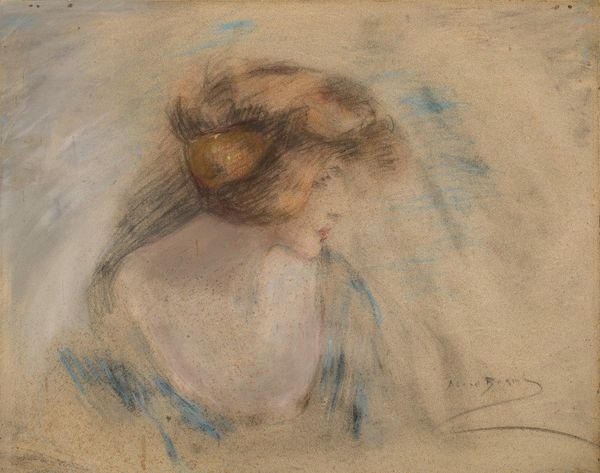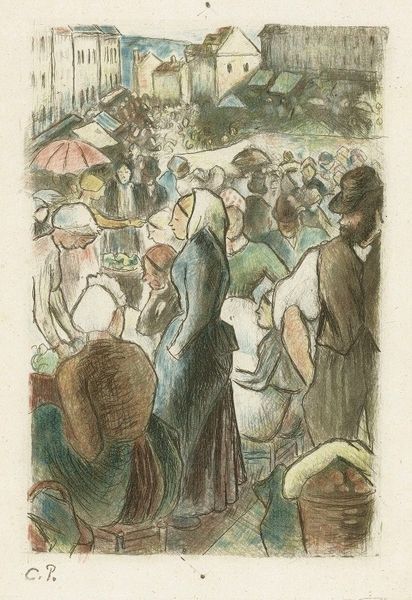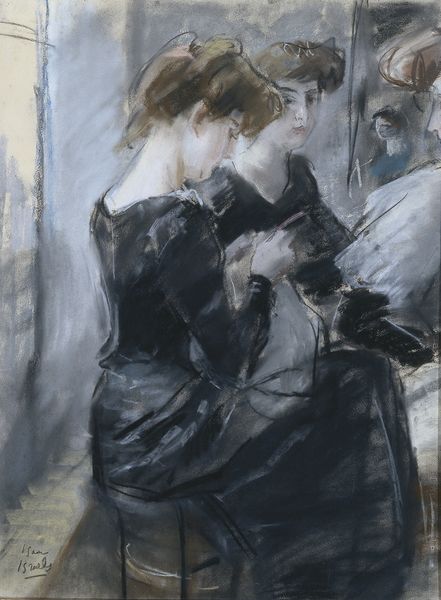
Place Clichy 1880
0:00
0:00
pierreaugusterenoir
Fitzwilliam Museum (University of Cambridge), Cambridge, UK
painting, plein-air, oil-paint
#
portrait
#
painting
#
impressionism
#
plein-air
#
oil-paint
#
landscape
#
oil painting
#
cityscape
#
genre-painting
Copyright: Public domain
Curator: Let's discuss Pierre-Auguste Renoir's "Place Clichy," an oil on canvas painted around 1880, now housed here at the Fitzwilliam Museum. What's your immediate reaction to it? Editor: It's dreamlike, almost hazy. The colors blend so seamlessly that the figures feel less like portraits and more like whispers in a Parisian memory. There's a dominant beige and pastel color, which are offset by darker, mauve patches. It looks more like a reverie than reality. Curator: Indeed. Renoir’s impressionistic technique really captures the atmosphere of a bustling city center. Considering the rise of urbanism at the time, and the increasing number of women laborers or from middle-class families appearing in public places, the material conditions shaping these women’s access to these locations is something we could think about. How is Renoir representing labor and class here, if at all? Editor: It’s subtle. She's certainly dressed fashionably; look at that hat, and the style of brushstroke almost mimics fur. But the quick, loose strokes could also imply the fleeting nature of urban life for her. It also begs a reflection on class through the flâneur's eyes, whose social status grants the luxury of leisure to the men populating Renoir’s Parisian streetscapes. Curator: The handling of paint is fascinating. Considering impressionists preferred "en plein air", can you identify traces of this approach? This allowed him to capture the effects of light and movement directly from observation, breaking from studio-bound traditions and academic practice, where details mattered the most. Editor: Absolutely, especially in the background figures, which are just suggestions of people. What gets me is how Renoir focused on conveying emotion and atmosphere more than detailed representation. His approach mirrors that idea of transient feeling and of the ever-moving fluxus in social places, right? Curator: He rejects detail but uses material to define class! Do you see how the strokes of paint convey class belonging in terms of the subject's clothes? The consumption here could be a message... Editor: Yes, definitely! Even in this unfinished state, the brushstrokes imply detail where needed, offering glimpses into the consumerist displays and attire reflective of Paris’ bourgeoisie. It feels intimate, too – almost like eavesdropping on a moment. I'm still unsure whether her attire reflects freedom or the bindings of social and capital pressure to consume in certain places. It's intriguing. Curator: Indeed. Thanks for your thoughts! Editor: Thanks for the journey!
Comments
No comments
Be the first to comment and join the conversation on the ultimate creative platform.
